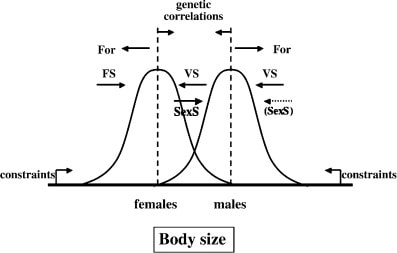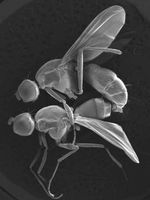|
Sexual size dimorphism (SSD) refers to the differences in body size among males and females. It arises when the net effects of natural selection and sexual selection equilibriate differently between the sexes (Andersson 1994).
In most vertebrate species, males are often the larger sex. But among invertebrates, females are usually larger than males, often due to strong fecundity selection. Closely related species and populations might differ in the magnitude of SSD but it is rare that both the magnitude and the direction of SSD varies within a species. We reported the first ever within species reversal in SSD in a particularly widespread dung fly, Sepsis punctum where males are larger than females among European populations but females are larger than males in North America. We also documented that sexual selection for male body size was significantly stronger in Europe, thus accounting for the male-biased SSD. Such a cross-continental reversal of SSD is exceedingly rare and much to our surprise, we documented yet another reversal in SSD in another close relative Sepsis neocynipsea. However, delightfully, the pattern was flipped in this species: Males were larger in North Amercian populations but females were larger in Europe. We are currently investigating the proximate mechanisms driving such a stark convergence in intercontinental reversal in SSD. |

Fig. 2: Convergent evolution of within-species reversal in SSD between North America (NA) and Europe (EU) albeit in opposite directions. Top panel- In Sepsis punctum, males (filled circles) are larger than females (open circles) in EU. Bottom panel- In Sepsis neocynipsea, males are larger in NA. (Data from Puniamoorthy et al 2012 & Rohner et al 2016)
Relevant publications
Rohner, P.T., W.U. Blanckenhorn and N. Puniamoorthy. 2016. Sexual selection on male size drives the evolution of male-biased sexual size dimorphism via the prolongation of male development. Evolution 70: 1189–1199. DOI: 10.1111/evo12944 Puniamoorthy, N., M. A. Schäfer and W. U. Blanckenhorn. 2012. Sexual selection accounts for the geographic reversal of sexual size dimorphism in the dung fly, Sepsis punctum. Evolution 66: 2117–2126. DOI: 10.1111/j.1558-5646.2012.01599.x |
Contact us |
|


